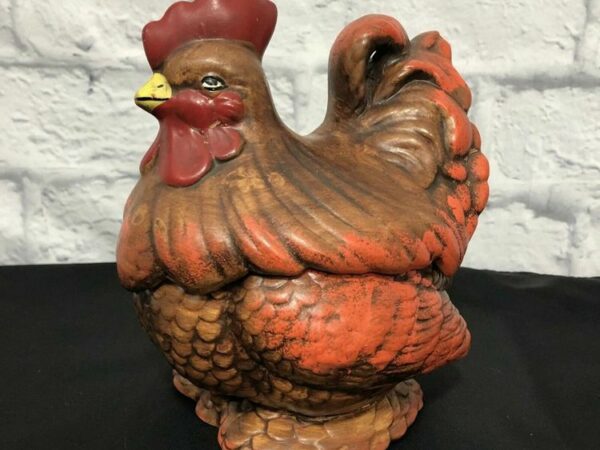For many years, collecting antique swords has been one of the most popular hobbies. In addition to increasing the beauty of your antique collection, they are a significant investment. The value of authentic antique swords is likely to grow by up to 20% every year.
Nevertheless, it can only be possible if the antique sword is authentic. There is a chance that you might mistake a fake antique sword for an original antique sword. Due to this reason, we have gathered all the information which will assist you in identifying an antique sword.
Furthermore, we have discussed how you can know a sword’s value.
Let’s dive into the details!
Table of Contents
Antique Swords – A Brief History:
People have always associated swords with power. The making and usage of swords date back to ancient times, around 3700 BC. In Egypt and Turkey, people started to mine copper at that time. After that, the Egyptians mixed copper and tin to make bronze, with which they made the sword blades.
In 1400 BC, the Syro-Hittites produced iron swords. In 600 BC, the Iberians made Toledo swords for the first time. These swords are still in demand. In the same period, people started producing steel swords in Lower Rhine, Germany and came to be known as the leading sword manufacturer.
However, there was a lack of information about sword manufacturers and swordsmiths till the 14th century. Nevertheless, it was a popular weapon choice in African continents, Asia, and Europe, and the prominent manufacturers were Italy and Germany.
In addition, the most well-known sword makers began to put their signatures or hallmarks on their swords to differentiate them from ordinary ones. Ingelri and Ulberht were the first ones to put signatures on their blades. They belonged to 8th century Germany.
Furthermore, the most prominent manufacturer was the Missaglias family in Italy, who supplied weapons to Giovanni Angelo, Tomaso, Antonio, and Damiano in the 15th century. One of their descendants established Filippo Negroli, and they created swords for the Dukes of Urbino, the Holy Roman Emperor, and the Royal Courts of France and Spain.
Also, King Henry VIII started the Royal Workshops at Greenwich, London, in the 15th century. On the other hand, Ames Manufacturing was the largest producer of swords for civil war in America from the 19th century to the 20th century.
Antique Swords Identification:
It is crucial to differentiate between the real and the fake ones to get an authentic antique sword. You must know about the blades, their origin, and their purpose. There were makers in the past who put marks on their swords, such as signatures. With this, it would become easier to know about the manufacturer. Currently, the same method is used to identify them.
Ewart Oakeshott is the most significant medieval writer who wrote many books regarding swords. His books are widely used as a guide to identifying swords. If you are new to collecting antique swords, his books will help you to recognize the original antique piece.
Nevertheless, the first step in identifying any antique piece is to learn about its type. Let’s check the most common antique sword types.
When swordsmiths started to craft swords, they experimented with many designs. Also, there are different patterns in different eras. Below are the most common sword types that are still popular today.
Broadsword:
Broadsword is another term used for military swords. The swords were used for chopping off heads or limbs. Moreover, they were also used for slicing. They were popular in the 17th and 19th centuries and were widely used.
Moreover, they had a Double-edged blade that was 2 to 3 inches at the base and tapered at the point. Their average length was 20 inches to 45 inches, weighing from 3 to 5 pounds.
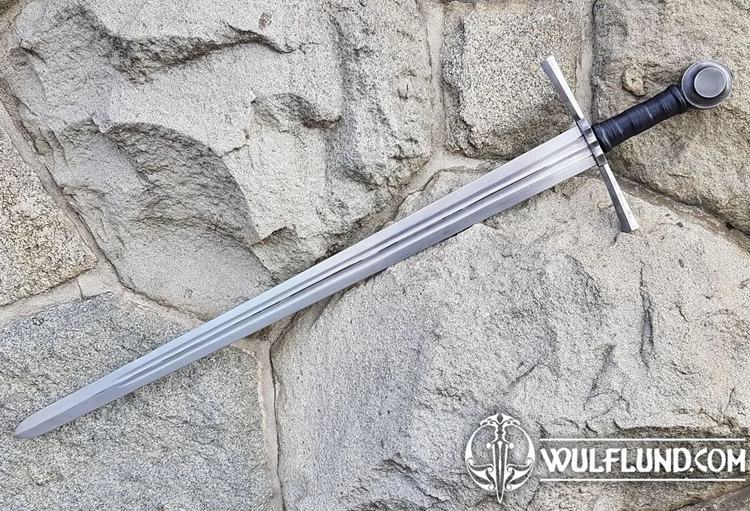
Artillery Swords:
Artillery swords were used in the wars by the United States Army from 1832 to 1872. However, these swords were originally made for the foot artillery unit. After this, musicians and sergeants from infantry units also used them.
The size of the foot artillery swords from 1832 was 25 inches long. Also, their weight was around 2 pounds. In addition, they had brass-mounted leather scabbards and a straight, double-edged blade.

Cavalry Saber:
During the Civil War, the saber was considered the traditional cavalry weapon. Moreover, it was one of the most commonly used weapons in the first and second world wars. The design of this sword was especially meant for being used on horseback.
Additionally, it had a single-edged, curved blade. Most of the swords also had eagle pommels. The cavalry saber of 1840 was around 44 inches long, with a 35 inches blade. Its weight was 2.5 pounds.
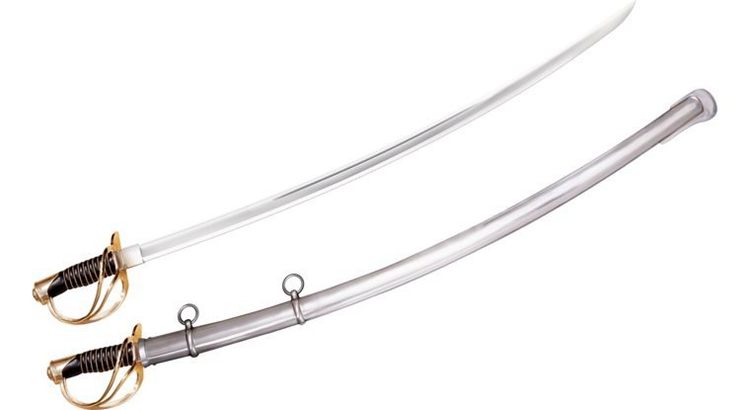
Falchion:
During the crusades, the knights used this sword for fighting from the 13th to the 15th century. The size of Falchion’s blade was not huge, but it was heavy single-edged.
In addition, the size of the Falchion was around 37 to 40 inches, and its weight was 1 to 2 pounds.
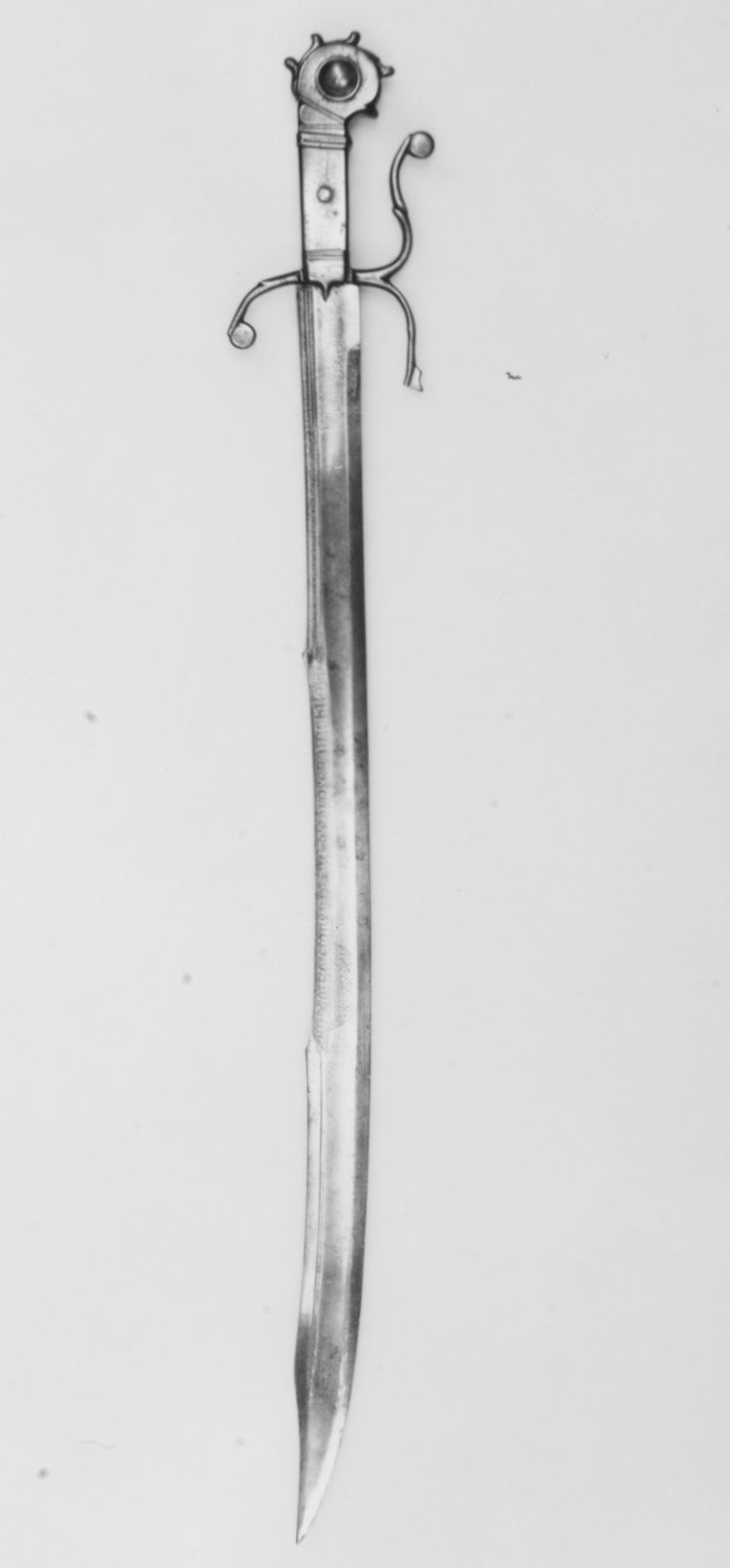
Greatsword:
The Greatsword was widely used as a two-handed sword. Furthermore, the fighters used it from the 16th to the 17th century. It was known for thrusting, cutting, and close contact fighting.
It was a heavy and long sword, with an average length of 50 to 72 inches and a weight of 6 to 10 pounds.
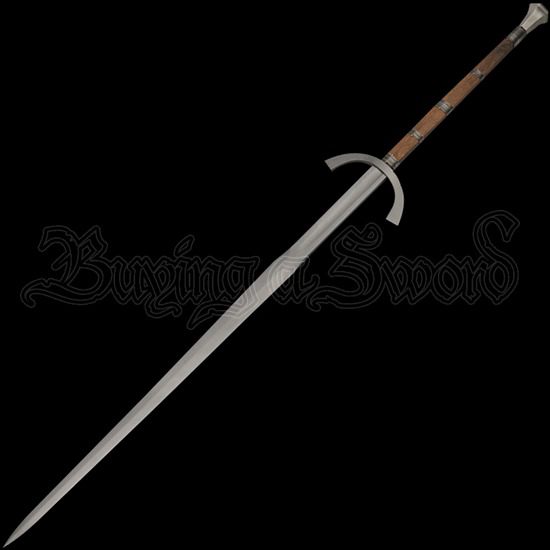
Cutlass:
Soldiers in the American Revolutionary War, the War of 1812, and the Civil Wars widely used this sword. Furthermore, it was popularly used in the 17th to 18th centuries in America, France, and Britain.
There were many designs of this sword, and the size also varied. Nevertheless, the average size of the Cutlass was around 28 to 32 inches. Also, the weight was 1 to 2 pounds.
The Navy of that time preferred this sword over any other because it was perfect for fighting in small areas.
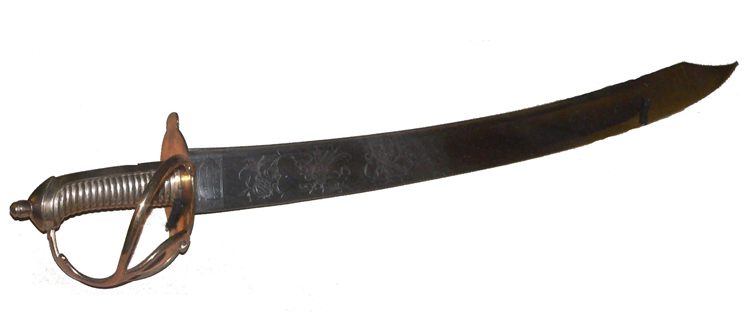
Infantry Officer’s Sword:
The infantry officers kept swords with them till World War 1. After that, officers only used these swords in special events. Nevertheless, they are not used in close contact fighting anymore.
One of the most prominent British sword makers made an infantry officer’s sword, which was considered the standard sword. That sword had a length of 32.5 inches and weighed 1 pound, 12 to 13 ounces.
If you want to identify a Wilkinson Sword, you can check its serial number. You can find these numbers on the blades. With that, it would be possible to learn about its owner.
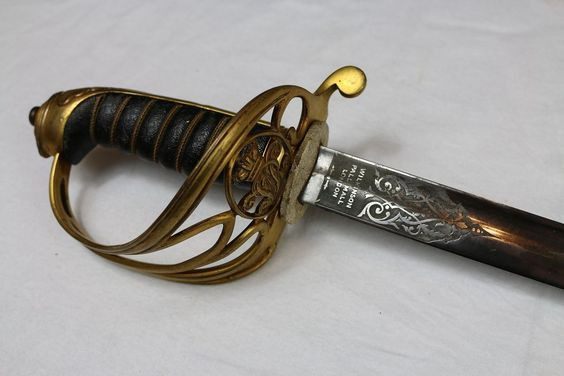
Japanese Katana:
Japanese Katana, also known as samurai swords, were used in 800 AD. They are one of the most desired swords by collectors. Their blade was curved and was around 3 to 4 feet in length.
In addition, their hilt size was around 8 to 12 inches. Also, it is well-known for its sharp blade. The smiths used to craft those blades with thin layers of real steel, and the layers were in hundreds of quantities. Furthermore, the makers aimed for perfection in the swords as they could not compromise on quality.
The Japanese Katana was one of the best swords, and it is incomparable. Also, this sword was brought to the United States after World War I in large quantities.
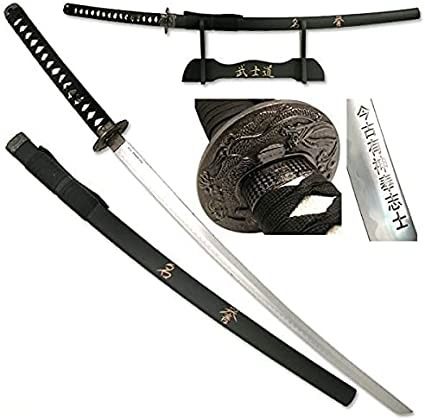
Longsword:
The longsword was also popular with the name hand and a half sword or a bastard sword. During the 15th to 16th centuries, fighters used this sword to cut and thrust their opponents in close contact battles.
Moreover, the origin of the longsword is Switzerland and Germany. In length, they were around 44 to 40 inches, weighing 5 to 8 pounds. Also, they had a double-edged blade.
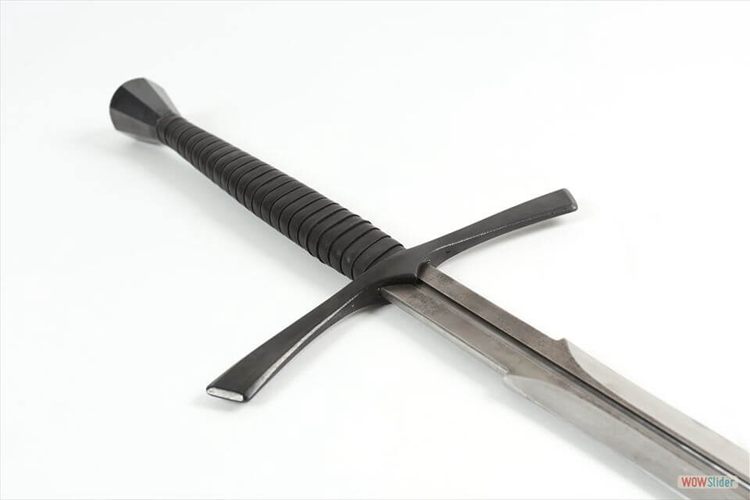
Rapier:
The rapier, widely known as the gentleman’s sword, was used in the 16th and 19th centuries. The fighters used this sword, especially in duels and fences. Besides, it symbolizes rank in the military.
Gentlemen used this sword as a walking sword. Nevertheless, these swords were not heavy and only weighed around 2 pounds. Their blades were long and thin, with double-edged and thick cross-sections.
There was a recommended length of the sword; the sword’s cross should be at the level of the navel if the point is on the ground.
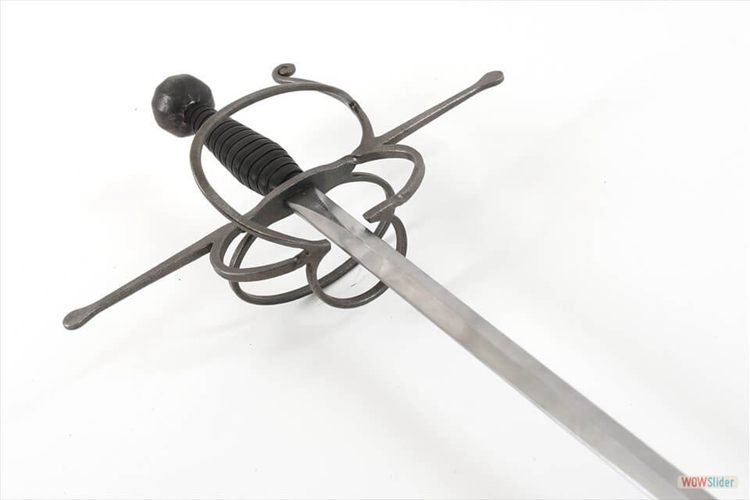
Size of the Sword:
The sword size will help you to determine its authenticity. Before buying a sword, you have to check its estimated size from a guide. In this article, we have mentioned the estimated size of each sword, such as the estimated length of a Greatsword is 50 to 72 inches.
Therefore, if anyone is selling a Greatsword that is below 50 inches or above 72 inches, it might be a replica.
Blade Material:
In the past, smiths used high-quality metal to craft swords, whereas the materials that are used today to make swords do not have the same quality. Moreover, modern craftsmanship will be different from the old master’s craftsmanship. Thus, you can identify the difference.
Hilt and Blade:
The sword’s hilt should not be loose, as it indicates that it has been replaced. Also, if the blade is bent, it might be possible that it is a replica or that it has been replaced. In addition, you have to match the sword with the period in which it was made, its origin, and its model. If the sword does not relate to them, it might not be authentic.
Antique Swords Valuation Guide:
Since you now know how to identify the sword, the next step is to learn about its value. Numerous swords are available on the market, but how can you differentiate between a $100 sword and a $5 million sword? It seems like a challenging task. Nevertheless, we are here to make it easier for you. Below are some factors that determine the value of an antique sword.
Age:
The age of the sword can highly affect its worth, which means if a sword is older, it will have more value. Nevertheless, appraisers use various methods to know the age of a sword. They focus on the design, the style, as well as its manufacturer.
Condition:
Another factor that determines the value of an antique sword is its condition. If the sword is not in good condition, it will not have much worth. For example, if the sword has irreparable imperfections, damage that one can easily see, or scratches on the blade, its value will be decreased.
However, minor damage to the sword’s body does not decrease its price as it indicates that the sword is old.
Rarity:
If the sword type does not have many pieces and is rare, it will have more value. On the other hand, if a sword type has many pieces, it will have less worth.
This is the reason why the old European swords are expensive because most of them were thrown in the sea, and not many European swords were left.
Origin:
The origin of the sword will help you learn about its rarity. If it is made in a place where only a few high-quality swords are made, it will be more precious. The appraisers check the structure of the sword to recognize its origin.
Owners:
The previous sword owner can highly affect its price, as it can also identify the authenticity of the sword. For example, a sword used by Napoleon was sold for $6.4 in 2007 in France.
Value:
If you understand the above factors that determine antique swords value, it will be easier for you to learn how much is a sword worth. The 18th-century Boateng Saber was one of the most expensive swords, sold for $7.7 million. It was crafted between 1736 – 1795, during the Qianlong rule. Furthermore, its blade was decorated with high-quality metals such as copper, silver, and gold.
Similarly, a sword named Tai Chi God Beast Serpent is available for $44,997.30. It has a straight and double-edged blade with a Macassar ebony wood handle.
A Signed Mitsutada Japanese Samurai sword costs $40,000. It belongs to the Kamakura period from 1192 to 1333, and its overall length is 53.8 cm.
Valuation Sources:
Do you have an antique sword or want to buy one but do not know how to identify old swords? Well, some of the things can assist you in this matter.
Below are the two commonly used methods:
Online Appraisals:
Checking the worth of your antique items on the internet is not new. Many collectors have been doing that for many years. It has made it easier for them to identify the item’s worth. If you are new to collecting swords, you must search for an online platform that can assess your antique sword and give its value.
One of the most popular online appraisal sites is Mr. Expert. They offer free appraisals for the value of your antique items. Moreover, you can choose from their 28 categories of items. To get an appraisal, you just need to send them a photo of your antique item, and they will tell you its value in 48 hours.
Reference Books:
Another method to identify the value of an antique sword is to buy its reference book. One of the books you can find on the market is Price Guide to Antique Edged Weapons by Leslie Southwick.
Finding antique swords can be difficult, as many antique sword replicas are available on the market. Due to this reason, you should remain cautious while buying an antique sword, and find a reputable seller who has a license and can provide you with a guarantee of the authenticity of the item.
Nevertheless, you can find antique swords at auctions, estate sales, yard sales, and flea markets. In addition, you can get it from websites that sell them on the internet, such as eBay, Etsy, and other auction websites.
Conclusion:
Antique swords are one of the most sought-after items because they are valuable, and their worth increases with time. They were the first choice of weapon for fighters in the past, and due to their usage, they have become precious, and old swords value can not be compared with modern swords. Also, the craftsmen of that time used high-quality metals to make swords.
However, not every sword will be worth a thousand dollars. Therefore, it is crucial to know how to differentiate between a real and a fake antique sword. Whenever you buy an antique sword, open this article, check its type, and the factors that are used to identify it.
In addition, you have to check the sword’s condition, origin, rarity, age, and previous owner to learn its value. To make things easier, you can take the help of an online appraisal or a reference book.
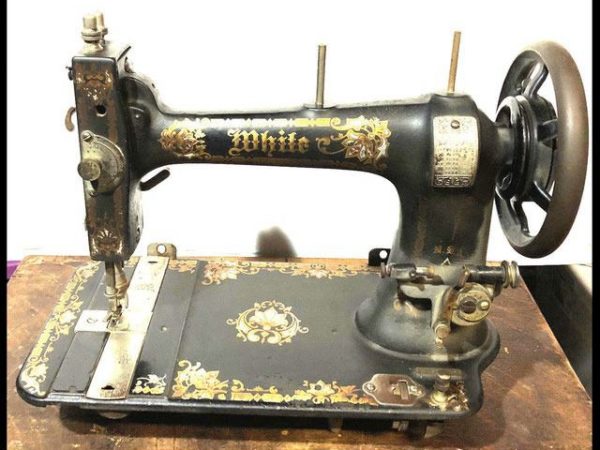
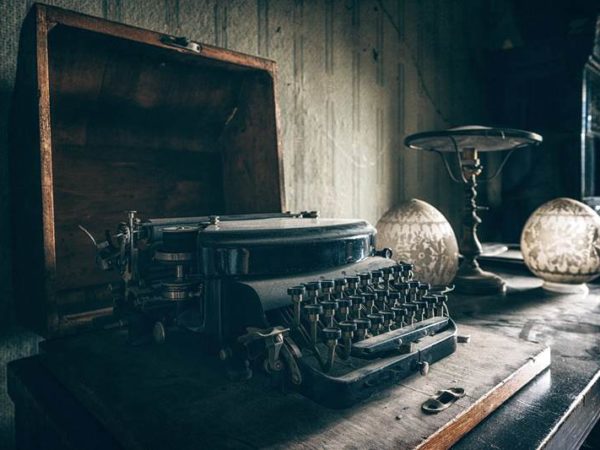
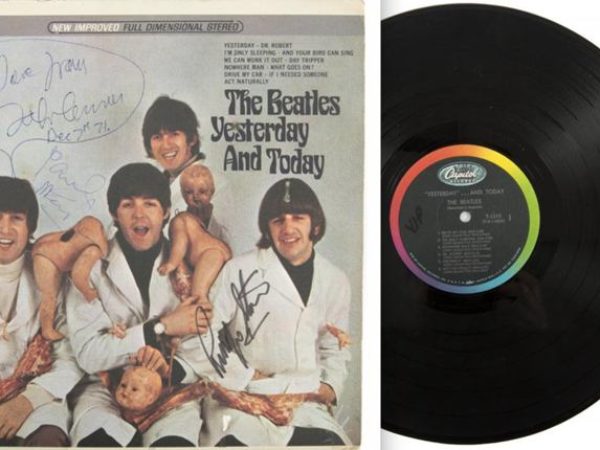
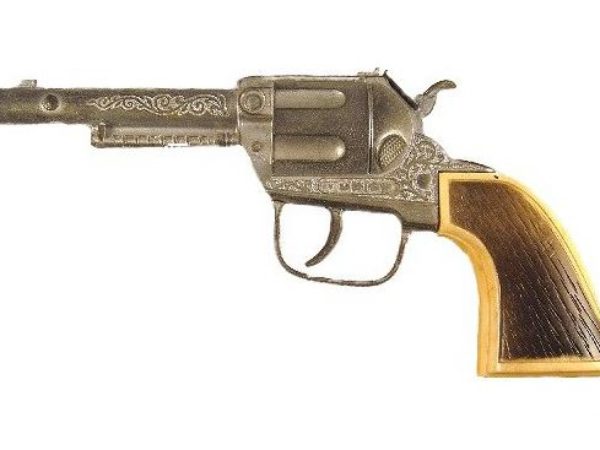
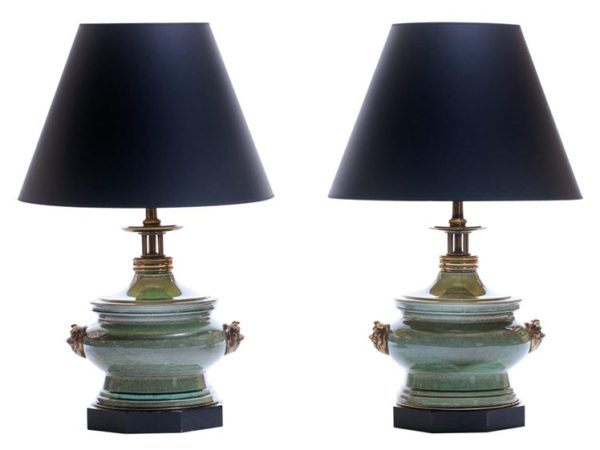
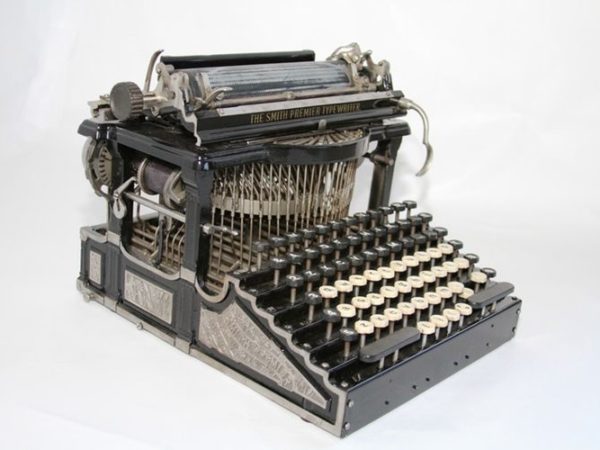
![Vintage Schwinn Bikes: [Types, Identification, and Values]](https://www.txantiquemall.com/wp-content/uploads/2022/05/5.-Schwinn-1967-Ramshorn-Fastback-Stingray-Sky-Blue-vtg-600x450.jpg)
